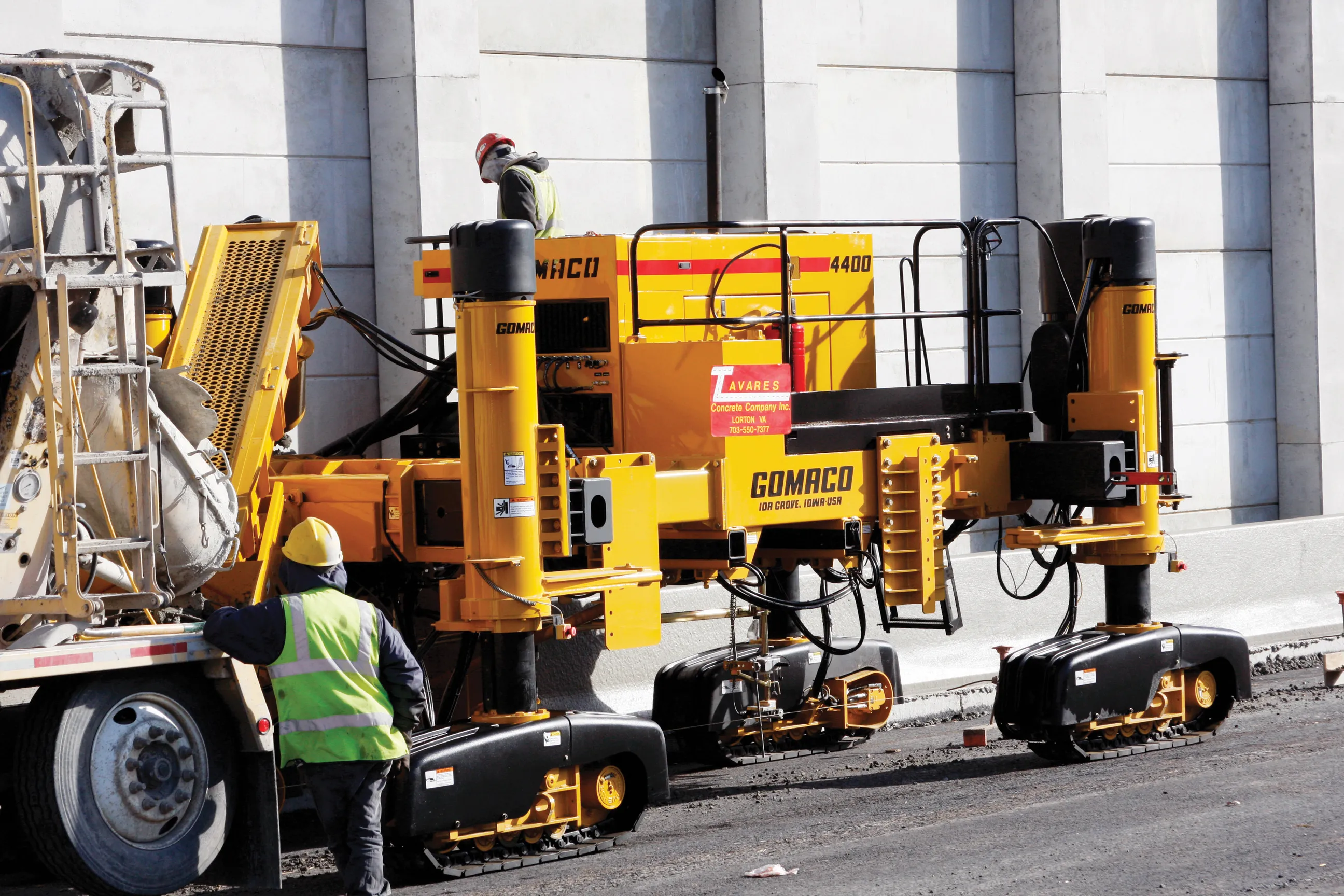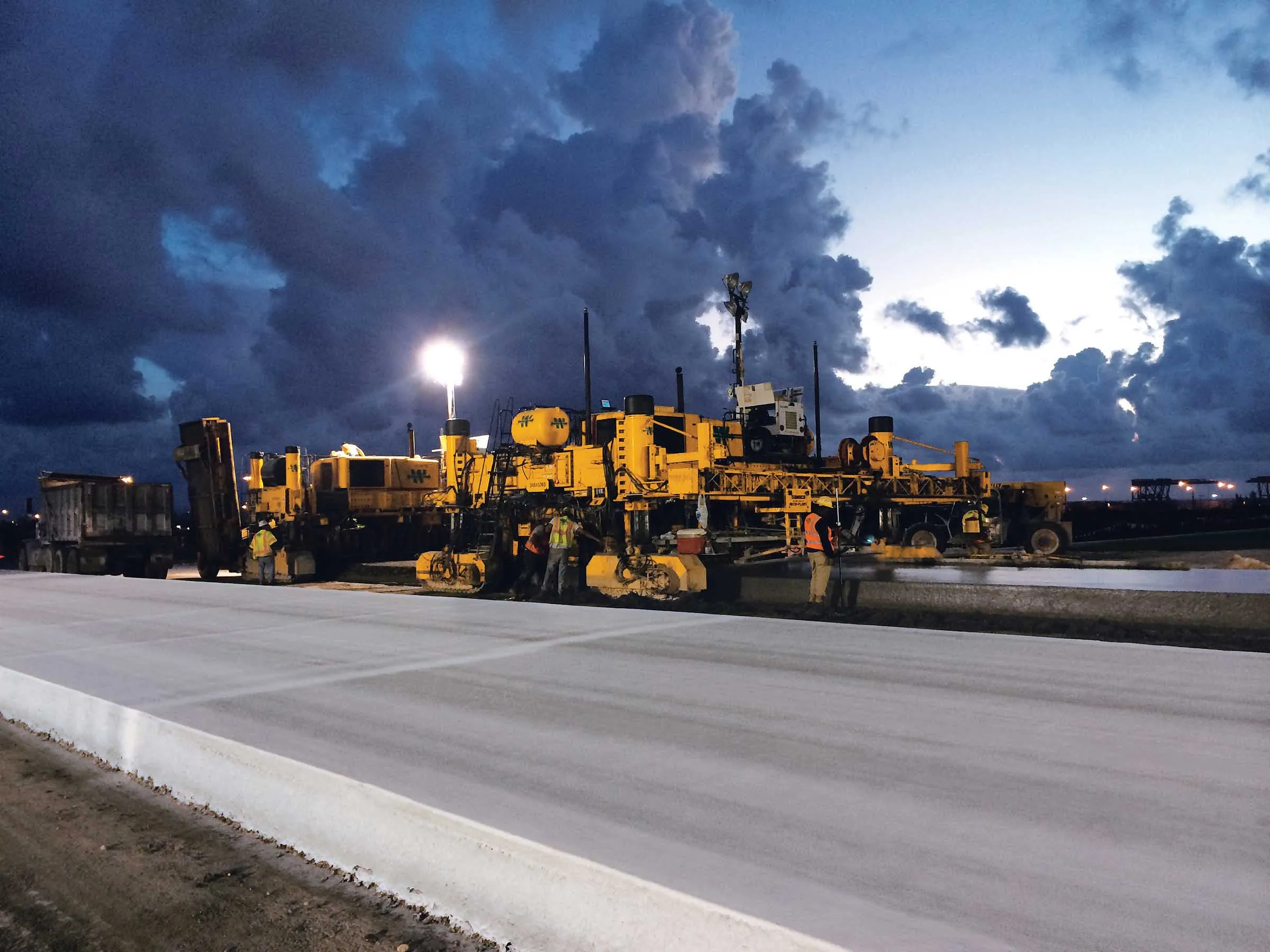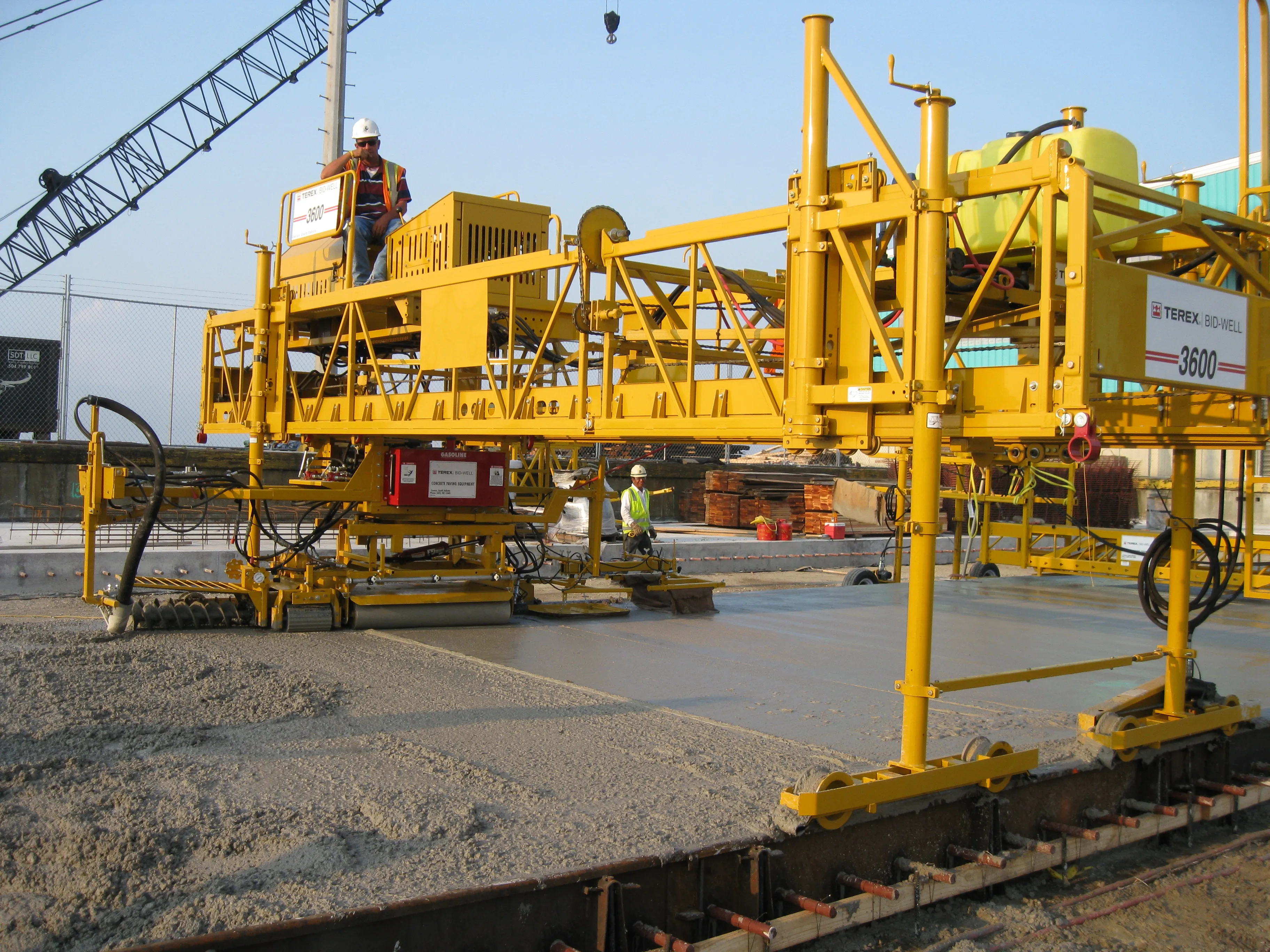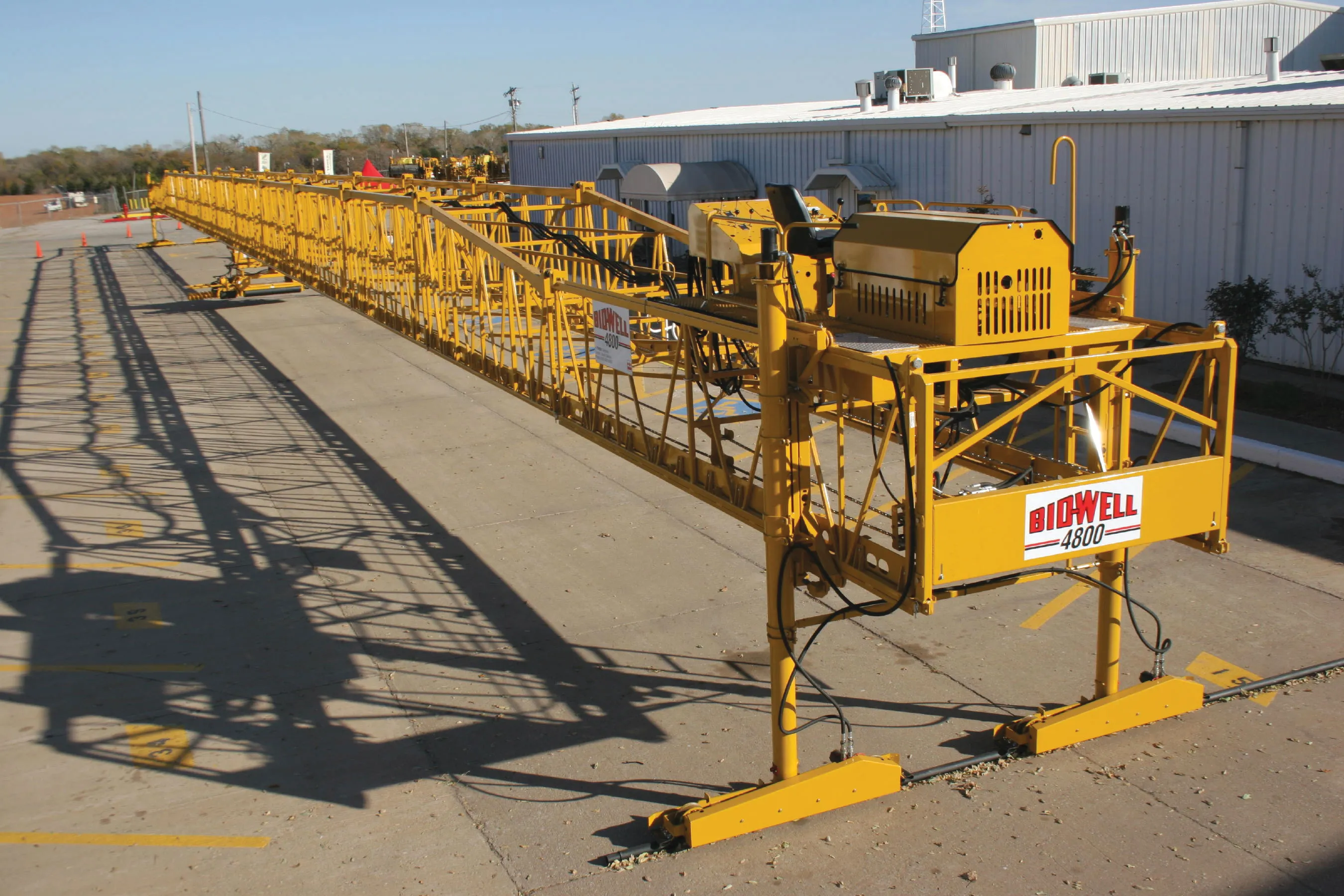Taking on a major bridge project in Calgary, Alberta province, Canada prompted Mission, British Columbia-based Camwood Construction to reassess its practice of subcontracting deck paving works. Inside the Terex booth at World of Concrete 2012, representatives from Camwood met with Mike Rodriguez, district manager for Terex Roadbuilding, and discussed the Terex Bid-Well 4800 paver on display. “The 4800 was the size of machine we needed for the Calgary job,” said Camwood owner Jeremy Woodman. Tony Regina, Cam
April 23, 2013
Read time: 4 mins
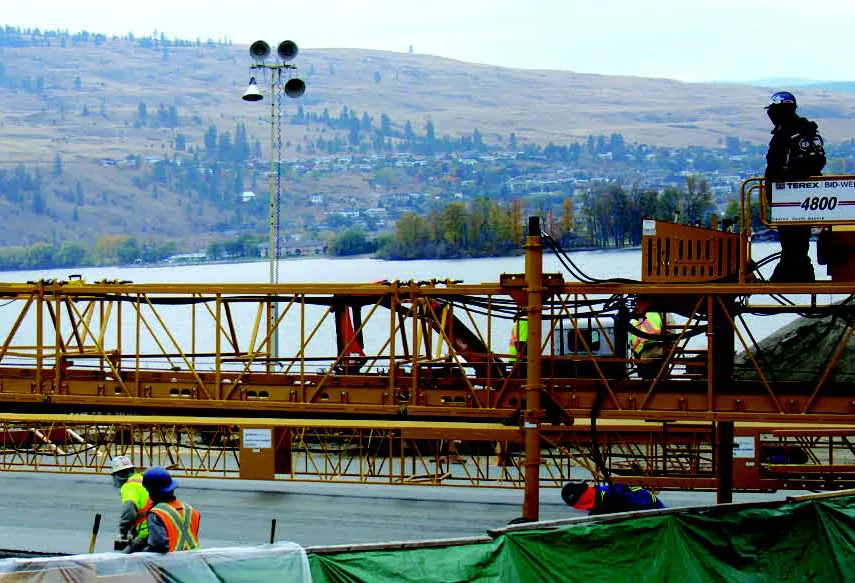
Taking on a major bridge project in Calgary, Alberta province, Canada prompted Mission, British Columbia-based Camwood Construction to reassess its practice of subcontracting deck paving works.
Inside the Terex booth at World of Concrete 2012, representatives from Camwood met with Mike Rodriguez, district manager for3956 Terex Roadbuilding, and discussed the Terex Bid-Well 4800 paver on display. “The 4800 was the size of machine we needed for the Calgary job,” said Camwood owner Jeremy Woodman.
Tony Regina, Camwood’s site superintendent for the Calgary Southeast Stoney Trail bridge project, had his own set of specific needs for a new bridge paver. “We needed a machine capable of paving at least [36.57m] 120ft wide,” he said. “Additionally, I wanted a durable paver and one that would give us the flexibility to pave difficult bridge decks built at a skew angle with a crown.”
Camwood purchased the 4800 paver with sights set on using the machine to pave in Calgary. However, a delay at the Calgary construction site gave the firm the opportunity to use the 4800 in Kelowna, British Columbia.
The project that became Camwood’s first paving attempt was on one of two bridges being built on Kelowna’s Highway 97. The paving of the larger bridge deck, subcontracted by Camwood, was a straight 27.43m wide by 39.62m long deck with cross fall of 4.8%, grade of 5%, a superelevation and spiral.
Unfortunately, Camwood’s chosen subcontractor’s 1980s-vintage bridge deck paver could not extend wide enough to pave the 27.43m deck width with one pour. So preparations had to be made for two pours with the aged machine. “We built and dismantled a bulkhead, ran additional dry runs, and had the [subcontractor] crews and equipment on the deck two separate days for the pours,” recalled Jevin Viesulas, site superintendent for Camwood, who added that a week’s time would have been saved if the subcontractor’s paver had been wide enough to pour the deck in one pass. The older paver was also unable to handle the 5% grade it was paving without slipping.
Camwood also planned to subcontract the smaller bridge deck paving to the same firm that paved the larger bridge. The deck measured a mere 22.86m wide by 24.99m long. Had the deck been able to be paved straight, the older paver would have been able to pave the full deck width in one pass. However, the structure was built at a 35% skew angle with a 2% crown either side of centre.
Paving at the skew, the preferred Ministry of Transportation method, meant the paver width being set at 27.43m to compensate for the skew. This extra length meant the subcontractor’s paver would again be too short to pave the full width of the deck in one pass. “If we can pave a deck in one pour versus two, this saves us [US] $10,000 to $20,000,” explained Viesulas.
The Terex Bid-Well skew bar kit option allows the paving carriage to be offset, so it hits the same crown points from the machine’s front to rear.
Increasing the complexity of the pour, the deck had a 5% grade, so, from previous experience, the crews had cable turfers ready to assist. Additionally, the 21.94m long girders had an 8.89cm camber, so concrete had to be loaded evenly to achieve the required deck smoothness.
Despite these major challenges, Camwood sent the 4800 to Kelowna. Camwood’s crews set the 4800’s width to 27.43m, paving at the skew so the deck could be poured at one time.
On October 25, 2012, Camwood started the pour of its first solo deck paving job. The 140.16m³ of concrete was brought to the jobsite in 5.94m³ loads and pumped onto the deck. The stiff, 5,000psi concrete was sent to the paving site at a dry 5.08cm slump.
Camwood set a paving productivity goal of 24.91m³ to 30.01m³ per hour and, within four-and-a-half hours, the 4800 work crew put the finishing touches on the bridge deck.
The 4800 is being sent by Camwood to Calgary in preparation for paving three bridge decks on the Southeast Stoney Trail project in spring 2013.
Inside the Terex booth at World of Concrete 2012, representatives from Camwood met with Mike Rodriguez, district manager for
Tony Regina, Camwood’s site superintendent for the Calgary Southeast Stoney Trail bridge project, had his own set of specific needs for a new bridge paver. “We needed a machine capable of paving at least [36.57m] 120ft wide,” he said. “Additionally, I wanted a durable paver and one that would give us the flexibility to pave difficult bridge decks built at a skew angle with a crown.”
Camwood purchased the 4800 paver with sights set on using the machine to pave in Calgary. However, a delay at the Calgary construction site gave the firm the opportunity to use the 4800 in Kelowna, British Columbia.
The project that became Camwood’s first paving attempt was on one of two bridges being built on Kelowna’s Highway 97. The paving of the larger bridge deck, subcontracted by Camwood, was a straight 27.43m wide by 39.62m long deck with cross fall of 4.8%, grade of 5%, a superelevation and spiral.
Unfortunately, Camwood’s chosen subcontractor’s 1980s-vintage bridge deck paver could not extend wide enough to pave the 27.43m deck width with one pour. So preparations had to be made for two pours with the aged machine. “We built and dismantled a bulkhead, ran additional dry runs, and had the [subcontractor] crews and equipment on the deck two separate days for the pours,” recalled Jevin Viesulas, site superintendent for Camwood, who added that a week’s time would have been saved if the subcontractor’s paver had been wide enough to pour the deck in one pass. The older paver was also unable to handle the 5% grade it was paving without slipping.
Camwood also planned to subcontract the smaller bridge deck paving to the same firm that paved the larger bridge. The deck measured a mere 22.86m wide by 24.99m long. Had the deck been able to be paved straight, the older paver would have been able to pave the full deck width in one pass. However, the structure was built at a 35% skew angle with a 2% crown either side of centre.
Paving at the skew, the preferred Ministry of Transportation method, meant the paver width being set at 27.43m to compensate for the skew. This extra length meant the subcontractor’s paver would again be too short to pave the full width of the deck in one pass. “If we can pave a deck in one pour versus two, this saves us [US] $10,000 to $20,000,” explained Viesulas.
The Terex Bid-Well skew bar kit option allows the paving carriage to be offset, so it hits the same crown points from the machine’s front to rear.
Increasing the complexity of the pour, the deck had a 5% grade, so, from previous experience, the crews had cable turfers ready to assist. Additionally, the 21.94m long girders had an 8.89cm camber, so concrete had to be loaded evenly to achieve the required deck smoothness.
Despite these major challenges, Camwood sent the 4800 to Kelowna. Camwood’s crews set the 4800’s width to 27.43m, paving at the skew so the deck could be poured at one time.
On October 25, 2012, Camwood started the pour of its first solo deck paving job. The 140.16m³ of concrete was brought to the jobsite in 5.94m³ loads and pumped onto the deck. The stiff, 5,000psi concrete was sent to the paving site at a dry 5.08cm slump.
Camwood set a paving productivity goal of 24.91m³ to 30.01m³ per hour and, within four-and-a-half hours, the 4800 work crew put the finishing touches on the bridge deck.
The 4800 is being sent by Camwood to Calgary in preparation for paving three bridge decks on the Southeast Stoney Trail project in spring 2013.


